5. Jurassic Park (Steven Spielberg, 1993)
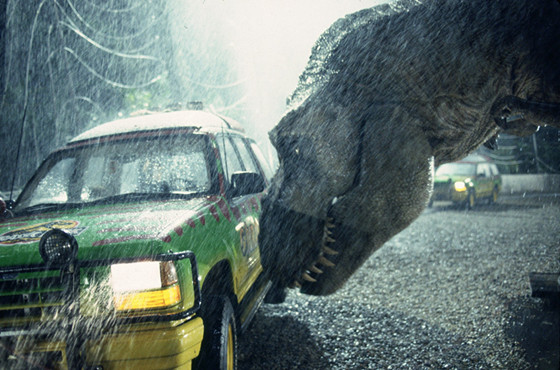
It would be unjust to have a list about nineties American cinema without including an entry from Steven Spielberg. Schindler’s List and Saving Private Ryan could both equally deservedly be featured here but it is inarguable that Jurassic Park has to be. A film about a dinosaur theme park was always going to be popular but not many would have anticipated upon its release that it would continue to be Spielberg’s highest grossing film almost thirty years later, being the only of his films to break the billion-dollar barrier. Spawning two direct sequels and the Jurassic World reboot that promises at least four films, the Jurassic Park franchise is the tenth highest grossing of all-time and is only going to climb in the future.
As well as still inhabiting its own sphere of influence in the modern day box-office with the Jurassic Worlds, Jurassic Park re-energised the monster movie as a whole. Godzilla and King Kong had been out of fashion since the 1950’s while dinosaurs hadn’t been feared since One Million Years B.C. (the film, not the year). However, since the success of Jurassic Park there have been an array of both Godzilla and King Kong projects, including a highly anticipated crossover that is hoped to provide a much-needed boost to the film industry once cinemas are widely re-opened.
There has also been a proliferation of monster movies that we have never seen before with the likes of Rampage, The Meg and Pacific Rim that all attracted big stars and even bigger audiences. Jurassic Park even revitalised interest in dinosaurs beyond cinema as studies suggest there is a link between the film and the rise in palaeontologists over the last decade, who would largely be made up of people that saw the film as children. Meanwhile, other films have capitalised on the fresh love for dinosaurs among adolescents with such films as Disney’s Dinosaur, The Good Dinosaur and Ice Age: Dawn of the Dinosaurs.
The existence of dinosaurs may be a thing of the past as Jurassic Park-esque experiments continue to fail to resurrect them from extinction (if they are at all being conducted), but the legacy of Jurassic Park continues to keep them in the present.
4. The Blair Witch Project (Daniel Myrick and Eduardo Sanchez, 1999)
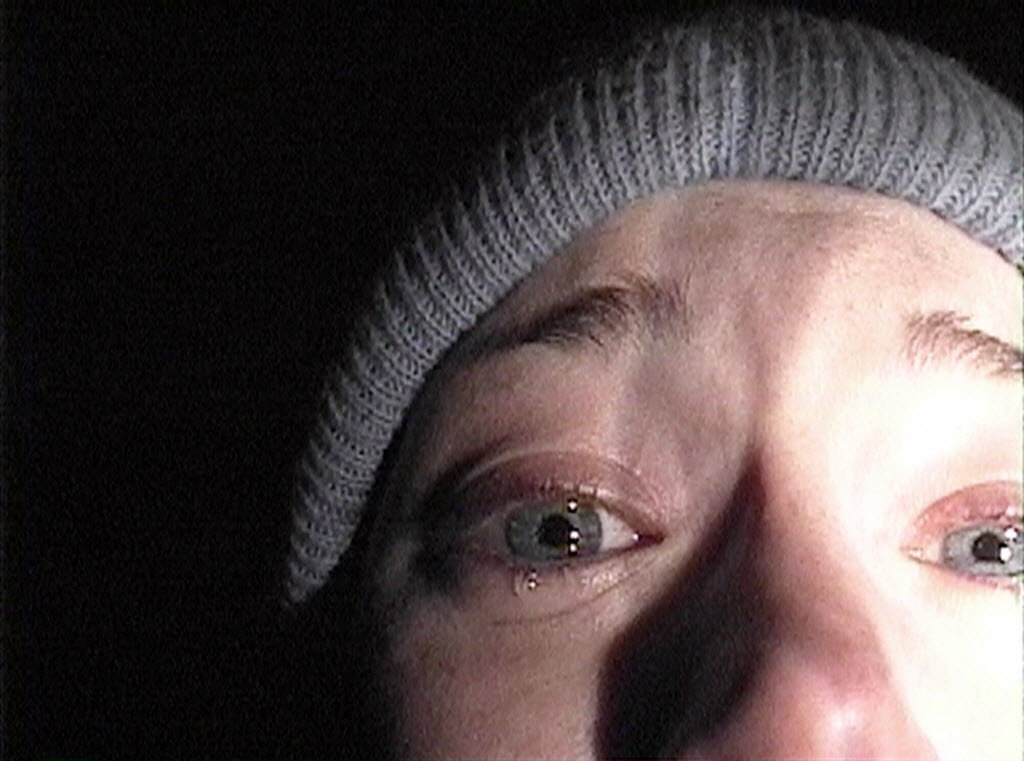
Produced for the miniscule amount of $60,000, The Blair Witch project pales in comparison to the size of the other films on this list. Costing approximately one CGI T-Rex arm or the cutlery aboard the Titanic, the independent film relied heavily on the suspense on what it wasn’t showing the audience rather than dazzling them with what they were. While being one of the most surprising hits of the decade, The Blair Witch Project went on to become one of the most profitable films of all-time, going on to make almost $250 million.
Shot on handheld video and 16mm cameras that anybody at home could own, The Blair Witch Project’s biggest impact is undeniably the popularisation of the found-footage sub-genre. The found-footage film of course existed prior to 1999, Ruggero Deadato’s notorious Cannibal Holocaust (1980) being one such example; however, with the advancement of digital video technology and its wider accessibility to the masses, The Blair Witch Project was able to blur the lines between fact and fiction, causing many to believe that the recorded events were genuine. Although it is definitely not limited to it, found-footage filmmaking has become a staple of the horror genre since The Blair Witch Project, significantly with the Paranormal Activity series, which has made upwards of $800 million world-wide, as well as countless other examples such as Cloverfield, Chronicle, V/H/S and The Visit.
The Blair Witch Project danced between fact and fiction even further with its marketing campaign by utilising another form of new technology – the internet – by creating a website for the film that included fake journals of the characters, police reports and a history of the Blair Witch Myth. The fact that they were using the internet alone as a form of digital marketing is significant for the 1990’s, let alone going an early form of viral and utilising a whole new platform to allow their audiences to immerse themselves ever further into the world of the film. A similar strategy was used by Christopher Nolan and the team behind The Dark Knight who a fake newspaper called The Gotham Times to attract interest and ran a faux political campaign for the character of Harvey Dent. For only a small film, The Blair Witch Project has had a lasting influence on some of the biggest films of the 21st century.
3. Pulp Fiction (Quentin Tarantino, 1994)
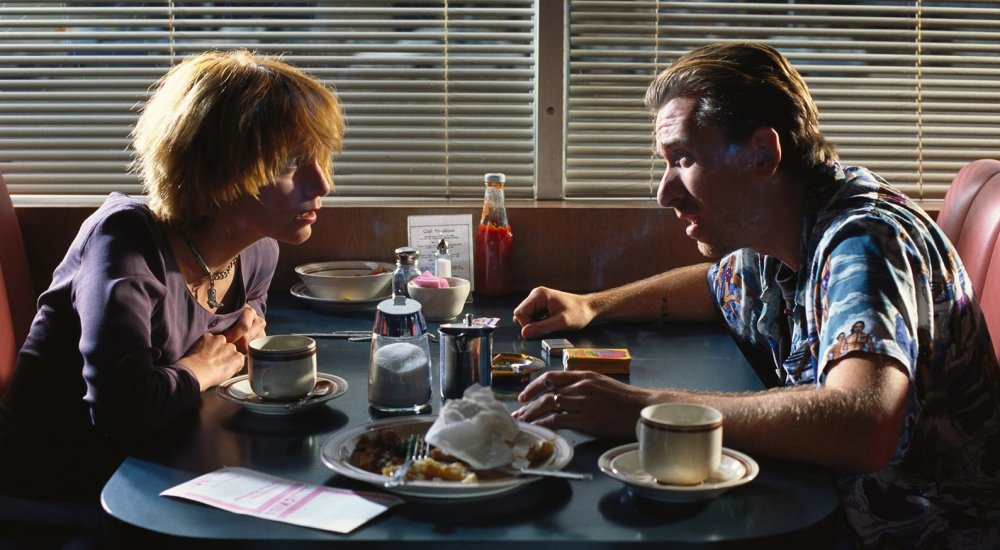
Roger Ebert, perhaps the most famous American film critic of all-time, once hailed Pulp Fiction as the most influential film of the 1990’s and, although that judgement is completely understandable, it is going to have to settle for third on this list. Quentin Tarantino’s sophomore picture is regarded by many to be the best of all of Tarantino’s esteemed canon and its poster continues to adorn university bedroom walls across the world. The film rocketed the career of Samuel L. Jackson to becoming one of the most loved, iconic actors on the planet for his foul-mouthed rants and lively diction while it revived the career of John Travolta after a long slump. Pulp Fiction is the prized jewel in the unofficial King of Postmodernism’s reconfigured crown that still continues to influence.
On the face of it, it should be easy to imitate the works of Tarantino well. He has a bold, confident directorial style that wears its own influences unabashedly on its sleeve and a colloquial, funny approach to characterisation and dialogue that make his pictures endlessly entertaining. There is not a lot of subtlety or nuance required from anybody looking to profit off the director’s popularity; loud and proud is the Tarantino method. However, it is surprising how many films following Tarantino’s recipe couldn’t cook up the same magic as him.
Following Pulp Fiction, there were countless attempts to emulate its amalgamation of exciting violence with black comedy, including such films as Things to Do in Denver When You’re Dead, The Boondock Saints, Lucky Number Slevin and The Way of the Gun, none of which come close to the standards of Tarantino’s masterpiece. There was a positive impact of Pulp Fiction on other filmmakers as the films unconventional, non-linear structure went on to influence the likes of Christopher Nolan as it proved that complex, challenging narratives can be successful and popular among mainstream audiences.
Finally, Pulp Fiction highlighted the impact a popular soundtrack can have in a film. Featuring classic songs from the likes of Kool and the Gang, Dusty Springfield and Al Green, Tarantino’s use of beloved music in Pulp Fiction grants an added dynamism that perfectly gets the audience in the same groove as the film. Unlike most other successful films’ soundtracks before it, most of the music used in Pulp Fiction was not written for the film and was instead assembled by Tarantino from already existing material that gives the film its spirited, jukebox appeal. Today, Edgar Wright is widely-celebrated for his similar use of music, particularly in 2017’s Baby Driver which heavily relies on its popular soundtrack, while James Gunn’s Guardians of the Galaxy films have sold almost as many albums as DVDs worldwide.
2. The Matrix (Lilly and Lana Wachowski, 1999)
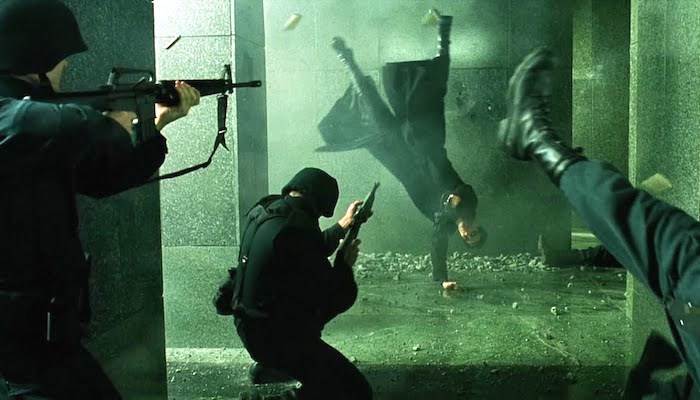
The number of films that The Matrix stylistically influenced is endless. Arriving at the dawn of the internet and computer technology, The Matrix is the definition of Cyberpunk with its grunge-green aesthetic, anime-inspired action, rimless sunglasses and leather-clad cast. It would be impossible to list all of The Matrix’s science-fiction successors here but examples include Kurt Wimmer’s Equilibrium and Ultraviolet, Zack Snyder’s Watchmen and the Underworld series. Science-fiction has never felt simultaneously so slick yet so dirty than in this style of digitised tech-noir. Laurence Fishburne described The Matrix as “the first film to deliver on what comic books always promised” and it is clear to see its influence on later, darker comic book films like X-Men and the Dark Knight trilogy with their darker tone, desaturated palettes and violent, highly-choreographed action sequences.
Perhaps the most famous action sequences of The Matrix are when they fight in slow-motion “bullet time” in which the characters can manipulate the flow of time and dodge speeding bullets – an idea that has heavily influenced other films such as Timur Bekmambetov’s Wanted, in which characters can curve the path of bullets. The action scenes in The Matrix are often in themselves influenced by Asian Martial Arts movies and may help explain the mass-popularity of Ang Lee’s Crouching Tiger, Hidden Dragon a year later in America which uses a similar style of slow-motion, physics-breaking fighting. In fact, both films employed the same Martial Artist, Yuen Woo-Ping, to choreograph their action sequences.
Furthermore, without The Matrix, it is unlikely that we would have had the John Wick films; one of the most popular, original franchises of recent cinema. Keanu Reeves and John Wick’s director, Chad Stahelski, worked together on The Matrix films as the latter was Reeves’ stunt man. Without this prior collaboration it is unlikely that the first film would have ever been made, especially as the Wick films’ style of high-concept, intricate stunt work and fight scenes themselves are very similar to that of The Matrix. In many ways, the release of John Wick in 2014 was fifteen years in the making after Reeves and Stahelski’s work together under the Wachowski’s.
1. Toy Story (John Lasseter, 1995)
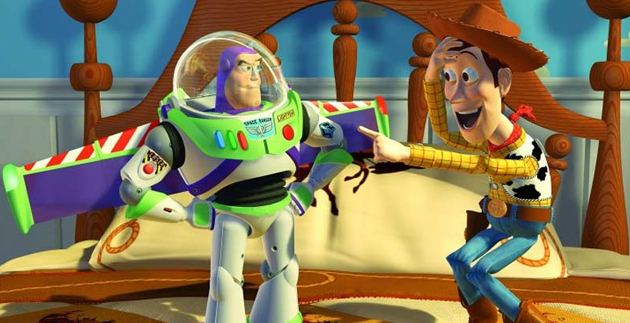
The first ever completely computer-generated feature film with 3D animation and the first from Pixar Studios, it is impossible to think of the film industry today if Toy Story had never been made. Toy Story revolutionised how animated films were made and structured and, through Pixar’s collaboration with Disney on the project, kickstarted Disney’s rise to cinematic domination. At the time of release, Steve Jobs said “we believe it’s the biggest advance in animation since Walt Disney started it all with the release of Snow White fifty years ago”; a statement that is hard to dispute after seeing almost the entirety of the animation industry convert to the process of CGI over hand-drawn animation over the last twenty-five years. Even Disney itself, a studio famous for its hand-drawn style, eventually converted to prioritising the production of computer animated films after the late nineties and early thousands box-office flops of Hercules, The Emperor’s New Groove and Treasure Planet.
Since basing their style on that of Pixar, Disney have had resounding successes with Tangled, Moana and the two Frozen films, both of which grossed over a billion dollars each. Without the success of Toy Story and the resulting success of Pixar Animation’s, Disney would never have had the boost in its animated division that is sorely needed which later helped to finance its acquisition of Lucasfilm, Marvel Studios, 20th Century Studios and whatever other corporations it will soon envelop.
Toy Story also had a huge impact upon people’s preconceptions of what animated film can be – legitimising animation as an art-form rather than movies that are just for children. The film aided in the conception that not all animated films had to be musicals and helped establish the casting of huge Hollywood stars in animated projects by hiring Tom Hanks and Tim Allen as voice-actors. Director John Lasseter received a special achievement award at the 1996 Oscars for Technological Accomplishment while the screenplay was the first for an animated film to get a writing nomination, helping to pave the way for animated films to get their own Academy Award category in 2001.
Toy Story itself has spawned three sequels, animated television spinoff series and multiple Toy Story Land’s worldwide to make it one of the most recognisable and loved franchises of all-time.